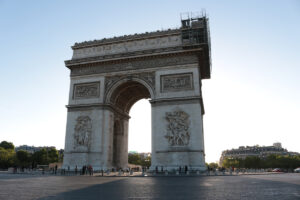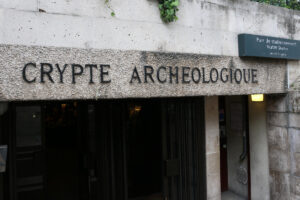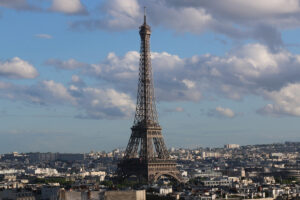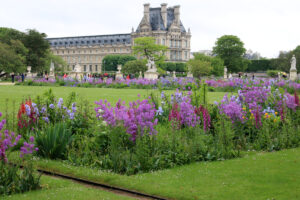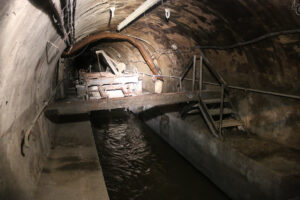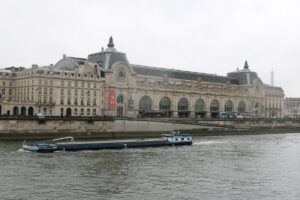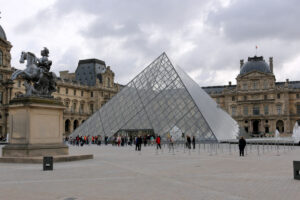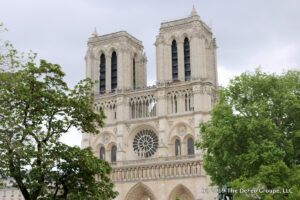Construction on the Arc de Triomphe de l’Étoile started in 1806 and lasted until 1836. Located in the Place Charles de Gaulle and at the western end of the Champs-Élysées, the Arc honors French soldiers who died fighting for France during the French Revolutionary and the Napoleonic wars. The Tomb of the Unknown Soldier from World War I is beneath the Arc, which was the tallest triumphal arch in the world until 1938.
The Archaeological Crypt located in front of Notre Dame preserves 2,000 years of Parian history. The crypt is home to Roman ruins dating to antiquity, which were discovered during the late 1960s and early 1970s. The museum was created in 1980.
The Eiffel Tower, or La Tour Eiffel as it’s known in French, is perhaps the most famous tower in the world. The tower was built the entrance arch to the 1889 World’s Fair. While it is a world-renowned landmark today, that was not always the case. Many roundly criticized the lattice Tower, but views toward the structure have changed over the past 130 years. The Eiffel Tower, located on the Champ de Mars, is the tallest structure in Paris and welcomes more than 6 million visitors per year, making it the most-visited paid monument in the world.
The Tuileries Garden is a public garden located between the Louvre and the Place de la Concorde in the 1st arrondissement of Paris. Catherine de’ Medici created the garden at the Tuileries Palace in 1564, and it opened to the public in 1667. Following the French Revolution, the garden became a public park.
For anyone interested in learning more about the complex maze of sewers winding its way beneath the Parisian streets, a visit to Le Musée des Égouts de Paris (the Paris Sewer Museum) is a must. The museum is located beneath the Quai d’Orsay near the famous Pont de l’Alma in the city’s 7th arrondissement and chronicles the need for sewers and their construction. Exhibits include replica and equipment used in the upkeep of the system, such as a giant ball used to clear clogs. An actual sewer line, complete with raw sewage, running below reminds museum-goers’ that while the museum and the city’s underground may be out of sight, it’s not always out of smell. A visit to the museum can take an hour or so, less for anyone who might be unable to keep their olfactory senses in check.
Anywhere in the world, the Musée d’Orsay would be the best art museum in the city. In Paris, it is probably the second best art museum in town. Regardless, the Musée d’Orsay is one of the best art museums in the world. It is home to one of the largest collections of impressionist and post-impressionist masterpieces. Manet, Monet, Degas, Renoir, Gauguin and Van Gogh are among the artists prominently featured in the museum. The museum opened in 1986 in the former Gare d’Orsay railway station, built in 1900.
The Louvre is perhaps the world’s best art museum. It and houses some of the most famous and consequential works of art ever created, including Leonardo da Vinci’s Mona Lisa. A former royal palace, the Louvre is located between the Tuileries Gardens and the church of Saint-Germain l’Auxerrois and is situated on the Right Bank of the Seine River. Construction on the earliest incarnation of the building, the Louvre Castle started in 1202 while construction on the Louvre Palace dates to 1546.
Workers began construction on Notre-Dame de Paris, which means “Our Lady of Paris,” in 1163. The famous Catholic cathedral, completed in 1345, is considered to be one of the best examples of French Gothic architecture in the world, not to mention its status as one of the world’s most famous churches. The cathedral served as the backdrop of Victor Hugo’s 1831 novel, “The Hunchback of Notre-Dame.” A fire on April 15, 2019, heavily damaged the cathedral, but officials have vowed to rebuild the structure.

